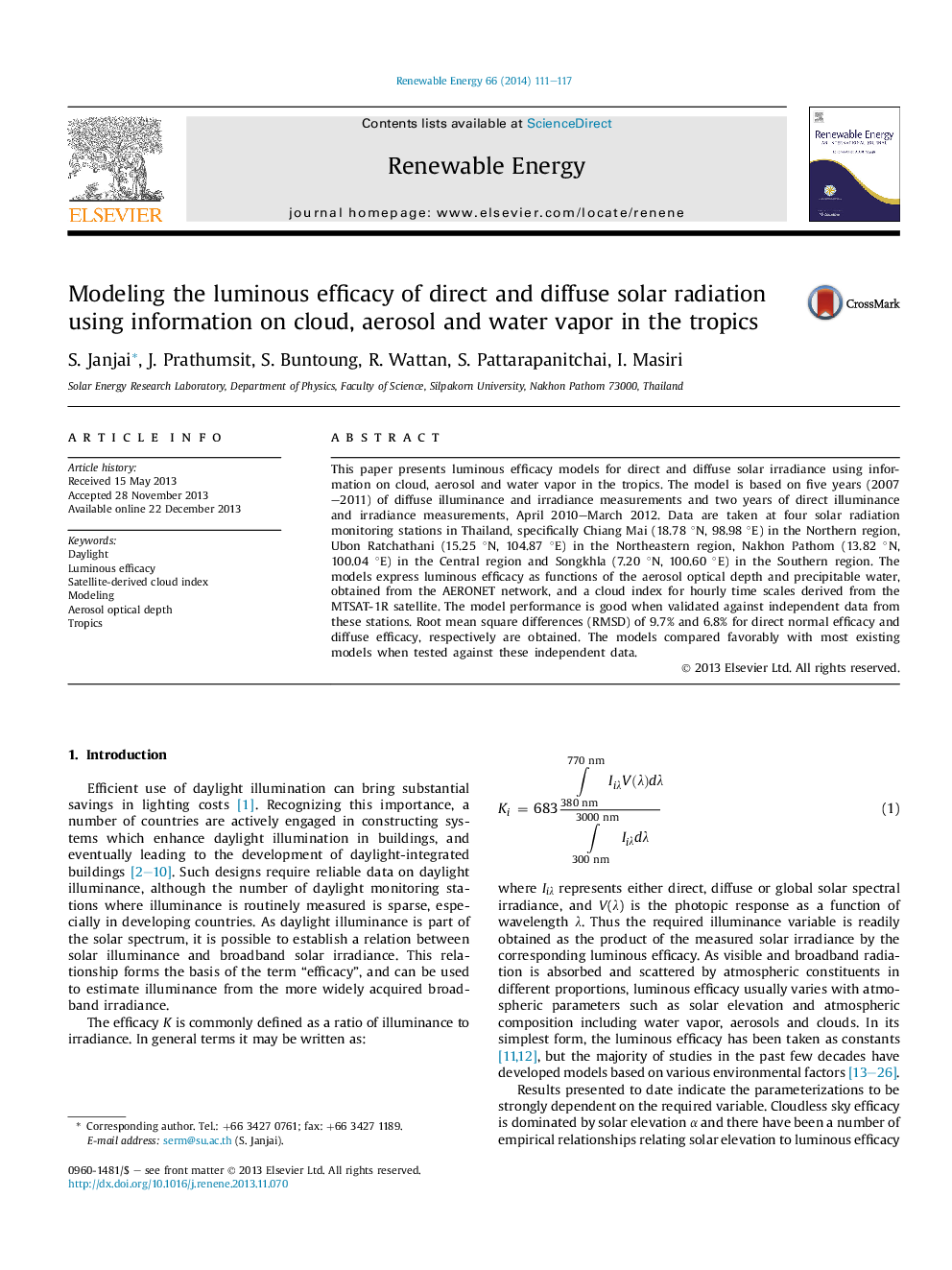| Article ID | Journal | Published Year | Pages | File Type |
|---|---|---|---|---|
| 6768482 | Renewable Energy | 2014 | 7 Pages |
Abstract
This paper presents luminous efficacy models for direct and diffuse solar irradiance using information on cloud, aerosol and water vapor in the tropics. The model is based on five years (2007-2011) of diffuse illuminance and irradiance measurements and two years of direct illuminance and irradiance measurements, April 2010-March 2012. Data are taken at four solar radiation monitoring stations in Thailand, specifically Chiang Mai (18.78 °N, 98.98 °E) in the Northern region, Ubon Ratchathani (15.25 °N, 104.87 °E) in the Northeastern region, Nakhon Pathom (13.82 °N, 100.04 °E) in the Central region and Songkhla (7.20 °N, 100.60 °E) in the Southern region. The models express luminous efficacy as functions of the aerosol optical depth and precipitable water, obtained from the AERONET network, and a cloud index for hourly time scales derived from the MTSAT-1R satellite. The model performance is good when validated against independent data from these stations. Root mean square differences (RMSD) of 9.7% and 6.8% for direct normal efficacy and diffuse efficacy, respectively are obtained. The models compared favorably with most existing models when tested against these independent data.
Related Topics
Physical Sciences and Engineering
Energy
Renewable Energy, Sustainability and the Environment
Authors
S. Janjai, J. Prathumsit, S. Buntoung, R. Wattan, S. Pattarapanitchai, I. Masiri,
